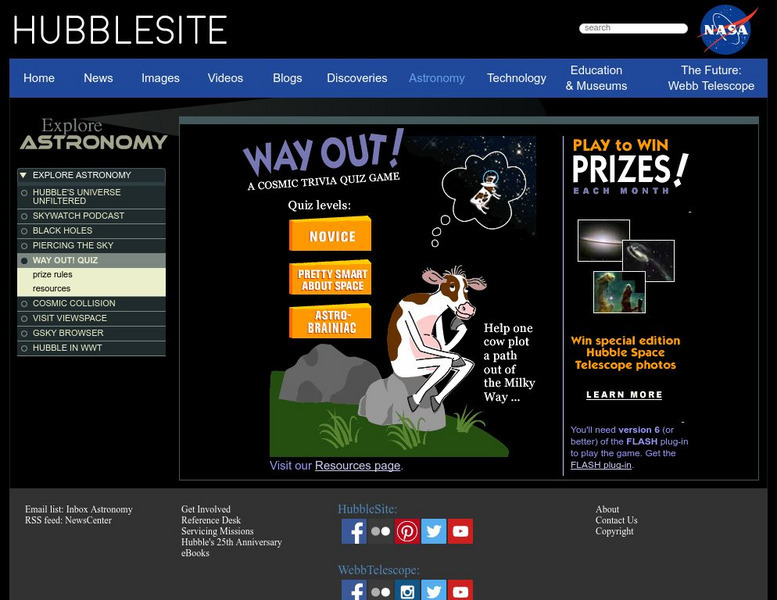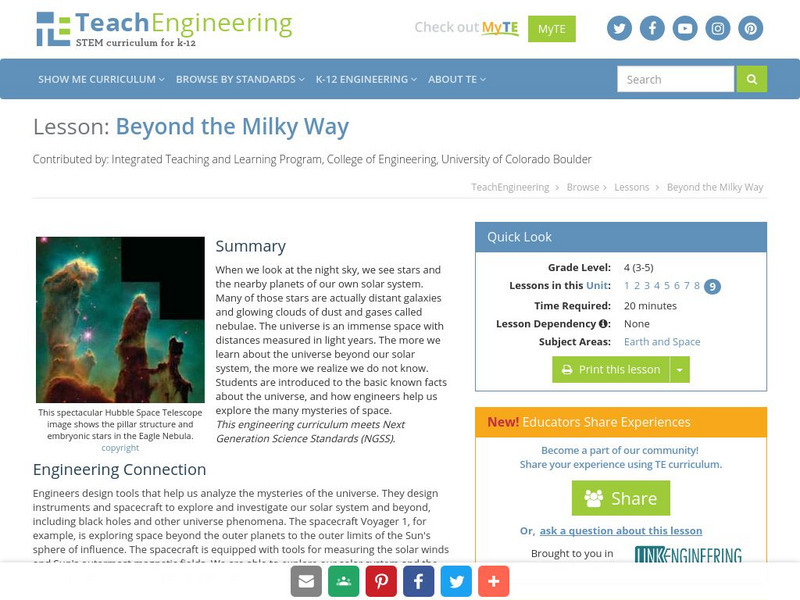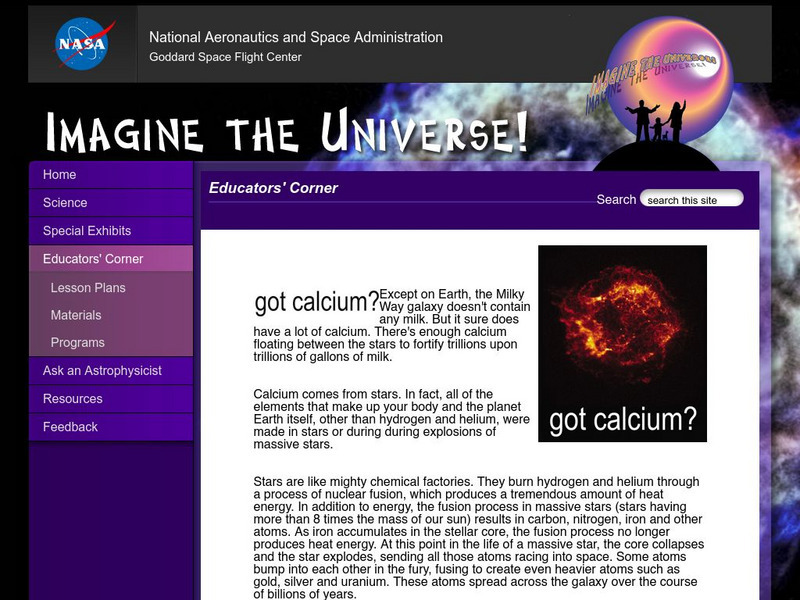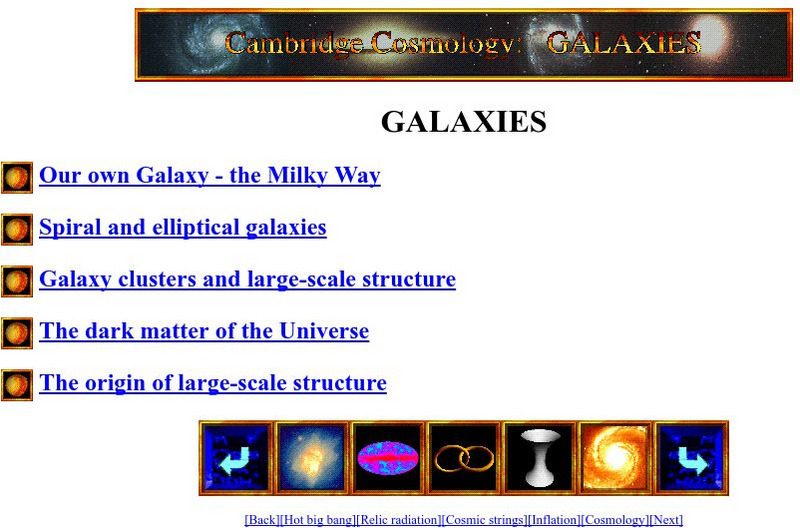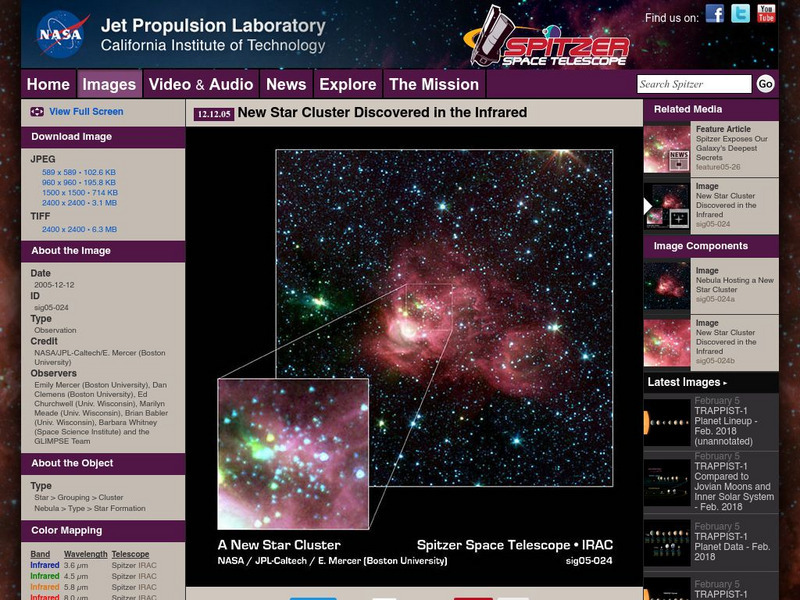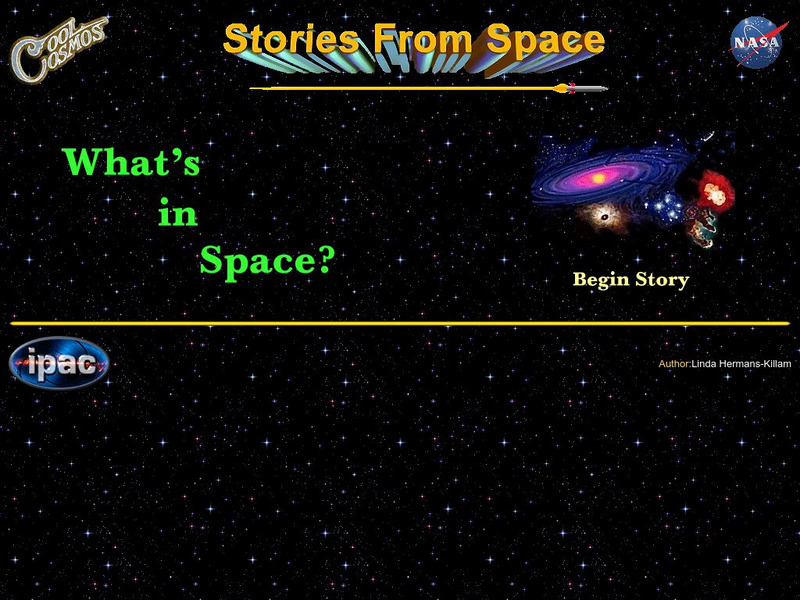Space Telescope Science Institute
Hubble Site: Way Out!
Can you help a cow plot a path out of the Milky Way? This hilarious space game is for all ages and is offered by HubbleSite. Users may pick their level of expertise and can choose from novice, pretty smart about space, or an astrobrainiac.
Mr. Nussbaum
Mr. Nussbaum: Galaxies Reading Comprehension
This learning module includes a nonfiction reading passage about galaxies including the Milky Way followed by a multiple choice self-assessment which gives students immediate feedback.
TeachEngineering
Teach Engineering: Beyond the Milky Way
When we look at the night sky, we see stars and the nearby planets of our own solar system. Many of those stars are actually distant galaxies and glowing clouds of dust and gases called nebulae. The universe is an immense space with...
NASA
Nasa: Wilkinson Microwave Anisotropy Probe (Wmap): The Milky Way
Description of the three major components of the Milky Way galaxy as well as images and resources for further reading.
PBS
Pbs: Nova: Hunting the Edge of Space
Hour One of Hunting the Edge of Space, "The Mystery of the Milky Way," includes information on the Milky Way and chronicles the history of telescopes from Galileo's time to today's planet-searching telescopes. Hour Two, "The...
Polk Brothers Foundation Center for Urban Education at DePaul University
De Paul University: Center for Urban Education: Learning About the Solar System [Pdf]
"Learning about the Solar System" is a one page, nonfiction, reading passage about the Milky Way gallaxy and what it takes to be a scientist. It is followed by constructed-response questions which require students to provide evidence...
NASA
Nasa: Imagine the Universe: Got Calcium?
This site has an article on, "The Milky Way galaxy doesn't contain any milk, but it sure does have a lot of calcium. There's enough calcium floating between the stars to fortify trillions about trillions of stars."
Other
University of Cambridge Cosmology: Galaxies
This site from the University of Cambridge allows you to view information on spiral, elliptical, and Milky Way galaxies, as well as galaxy clusters. Provides basic facts about each one.
Polk Brothers Foundation Center for Urban Education at DePaul University
De Paul University: Center for Urban Education: Learning About the Solar System [Pdf]
"Learning about the Solar System" is a one page, nonfiction, reading passage about the Milky Way gallaxy and how scientists learn about it over time. It is followed by questions which require students to provide evidence from the story;...
American Museum of Natural History
American Museum of Natural History: Ology: What Do You Know About Stars?
Test your knowledge with this ten-question quiz on stars. Focusing on stars in the Milky Way galaxy, questions range from the life cycle of a star to the number of stars in our galaxy.
A&E Television
History.com: The Space Race: Interactive Universe
A virtual journey through space offers photos and facts about Earth and its neighboring planets, comets, other celestial bodies of the Solar System, and the Milky Way and Andromeda galaxies.
Space Telescope Science Institute
Amazing Space: Galaxies Galore: Games and More
This is a fun and useful site to learn about galaxies. Content includes a building model to create your own Milky Way, games for learning the various types of galaxies, and more fun games.
The National Gallery (UK)
National Gallery, London: Ite: 'The Origin of the Milky Way'
See an example of how one teacher used this painting by Tintoretto to inspire her students to write and draw.
PBS
Pbs Teachers:monster of the Milky Way: Birth of a Black Hole
Discover how a dying star can be reborn as a black hole. View a slide show that follows the progression of events from an old, dying star to newborn black hole.
Australian Broadcasting Corporation
Australian Broadcasting Corporation: News in Science: Sucked In! Our Galaxy Eats Neighbour
From ABC News in Science, Judy Skatssoon's article discusses evidence and research surrounding the remains of the Arcturus stream of stars, remains that suggest the possibility of the Milky Way as a carnivore galaxy.
PBS
Pbs Learning Media: Spin a Spiral Galaxy
This interactive activity from NOVA Online lets you spin a spiral galaxy, including our own Milky Way. It demonstrates that what you can learn from visible light observations of a galaxy is largely determined by the angle from which you...
Society for Science and the Public
Science News for Students: Hold on to Your Stars, Ladies and Gentlemen
Describes scientific research that has revealed new information about the size and shape of the Milky Way.
California Institute of Technology
Spitzer Science Center: A New Star Cluster
The image entitled, "A New Star Cluster" shows the formation of a new group of stars located in the Milky Way galaxy. The text below the image goes into detail on describing the various specifics of the image.
California Institute of Technology
Cal Tech: Two Micron All Sky Survey
Learn about the Two Micron All Sky Survey project, in which telescopes and observatories scan the sky for infrared radiation in order to learn more about the Milky Way galaxy. The infrared spectrum is described and its importance to...
Ducksters
Ducksters: Astronomy for Kids: Galaxies
Kid's learn about the science of Galaxies. Large groups of stars such as the Milky Way throughout the universe are an interesting part of astronomy.
California Institute of Technology
Cal Tech: Stories From Space: What's in Space?
Through this story you will be introduced to outer space: stars, the Milky Way, planets, the Solar System, the Sun, clouds of dust and gas, galaxies.
University of Cambridge
University of Cambridge: Cosmology: Galaxies
This site from the Cambridge Relativity provides a brief description of the structure of the Milky Way galaxy. The parts described are the disc, bulge, and halo.


